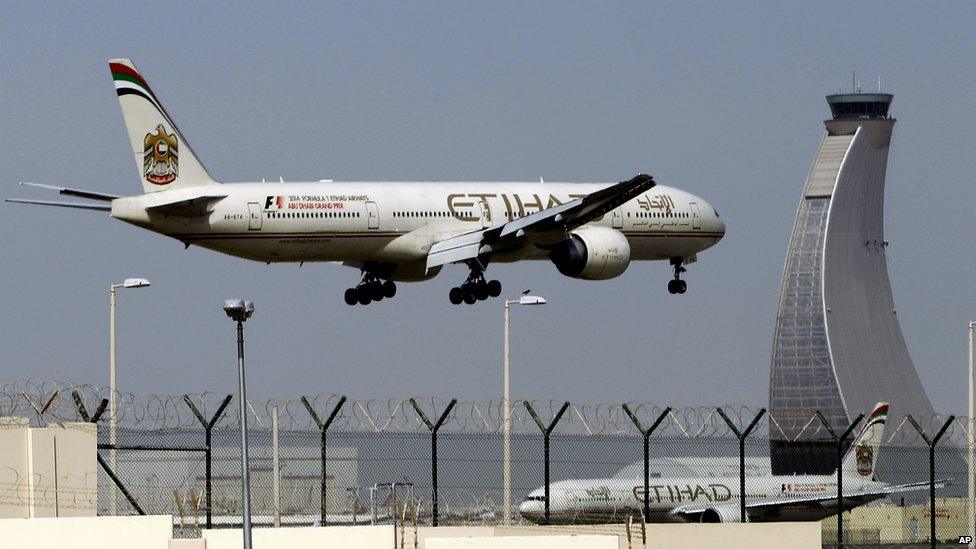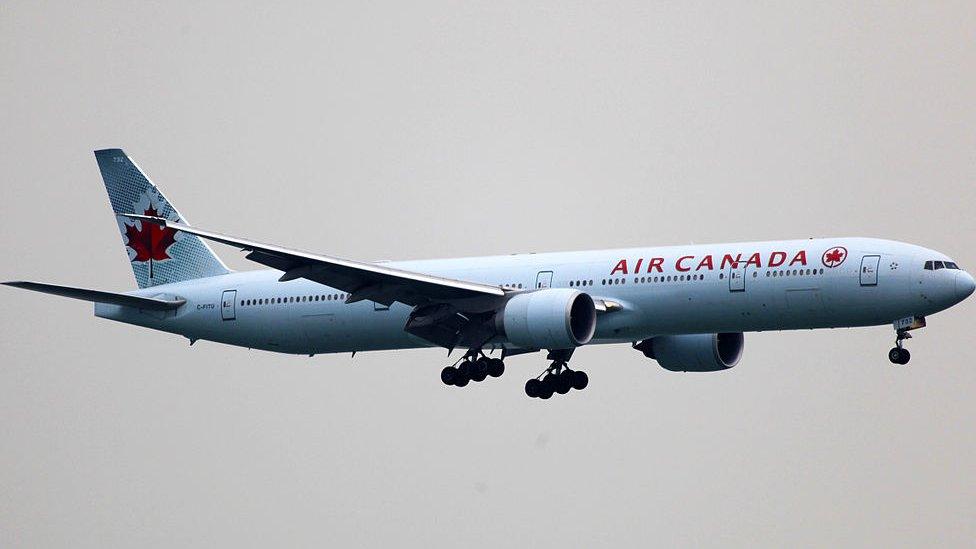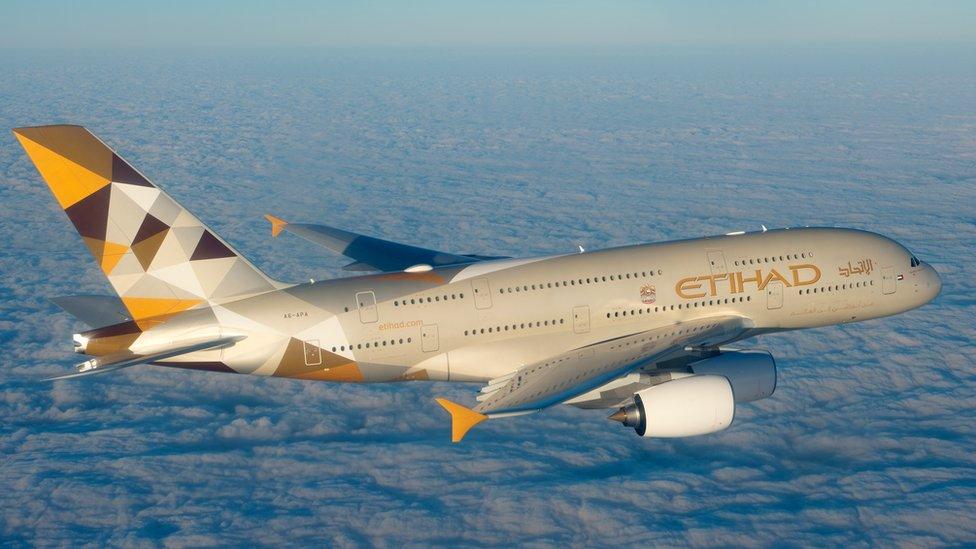Etihad turbulence: More than 30 passengers injured
- Published
More than 30 people were injured when an Etihad Airways flight hit "severe and unexpected turbulence" flying into Indonesia, the airline said, external.
The flight from Abu Dhabi was about 45 minutes away from Jakarta on Wednesday when the turbulence hit.
The plane, an Airbus A330-200, landed safely after the incident, but nine people were taken to hospital.
Video footage apparently from the flight showed passengers crying out as the plane shook.
The United Arab Emirates' national airline said the cabin luggage bins were damaged and passengers said oxygen masks were released during the shaking.
In a statement, the airline said 22 people had been "treated by paramedics for minor injuries at the airport. Nine other passengers have been taken to a local hospital".
Indonesian transport ministry spokesman Hemi Pamuraharjo said at least eight Indonesian passengers and a foreign flight attendant were hurt, with several suffering broken bones, the Associated Press news agency reports.
A number of those on board were Muslim pilgrims returning from Saudi Arabia. "It happened when I was performing prayer," passenger Nenden Nurhaini told the Jakarta-based news website Okezone. "The plane suddenly began to shake so fast."
Passengers and a crew member were injured when the plane ran into turbulence
Etihad said it had cancelled the return flight and was booking alternative flights and providing accommodation.
Airport and Indonesian National Transportation Safety Committee officials are inspecting the plane, the airport said.

What causes turbulence?
The list is long. According to the US Federal Aviation Administration, turbulence can be caused by:
air movement not normally seen
atmospheric pressure
jet streams
air around mountains
cold or warm weather fronts
thunderstorms
Turbulence can be hard to predict, and the injuries it causes cannot always be prevented by wearing seatbelts. In-air turbulence is the leading cause of injury on US flights, the FAA says.
Most turbulence accidents happen at 30,000 ft (9,000m) or above.
- Published31 December 2015

- Published31 July 2015

- Published31 December 2015

- Published12 April 2016
